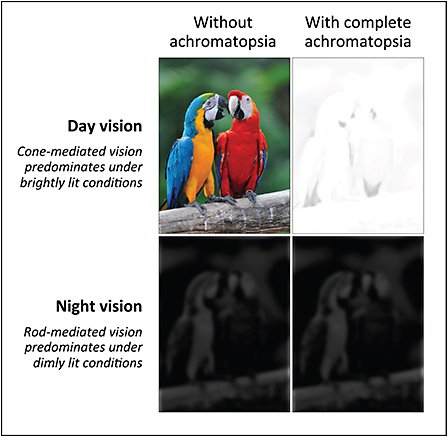Archives: Enciclopedias ART LAB

Osteosarcoma
According to estimates, more than 76% of people who are diagnosed before the cancer has spread live at least 5 more years. The same is true of 65% of people whose tumors spread to nearby areas, and of more than 26% of those whose cancer has spread farther.
After treatment, you’ll need regular checkups with your doctor to watch for any long-term side effects and make sure the cancer doesn’t come back.

Paralympic athletes
A Paralympian is an athlete who competes in the Paralympic games. They’re athletes that have bodily differences and different types of disabilities.

Mastectomy
Mastectomy is breast cancer surgery that removes the entire breast. A mastectomy might be done: When a woman cannot be treated with breast-conserving surgery (lumpectomy), which saves most of the breast. If a woman chooses mastectomy over breast-conserving surgery for personal reasons.

Toxic shock syndrome TSS
Toxic shock syndrome (TSS) is a condition caused by bacterial toxins. Symptoms may include fever, rash, skin peeling, and low blood pressure. There may also be symptoms related to the specific underlying infection such as mastitis, osteomyelitis, necrotising fasciitis, or pneumonia. A few possible causes of toxic shock syndrome are: Cuts or open wounds on the skin, Surgical wounds, Viral infections (e.g. chickenpox), Contraceptive sponges, History of a recent birth, miscarriage, or abortion, Using super-absorbent tampons, Previously having TSS

Bomb casualty amputations
Acts of terrorism tend to erode the sense of security and safety that we normally enjoy. Terrorism challenges the stability we enjoy in a predictable, orderly, and controlled world. Feelings of anger, frustration, helplessness, fear, guilt, distress, and a desire to seek revenge are all common responses.

Proximal Femoral Focal Deficiency
Proximal focal femoral deficiency (PFFD) is part of a spectrum of congenital deformities affecting the femur, more comprehensively named congenital femoral.

Congenital amputation
A congenital amputation means a limb is not formed correctly or is missing at birth. This happens while the limb is being formed in the womb. It is often: • Not genetic, meaning passed from parent to child • Not because of anything you did or did not do before your baby was born Congenital amputations may include one or more of the following: • Different limb lengths • Poor joint function • Weak muscles • Fragile skin.

Amputation accidents
Losing a limb is one of the most traumatic physical injuries that a person can experience. In addition to being a devastating physical injury, amputation injuries can also have a significant impact on a person’s mental health. Depending on the nature of the injury and the body part that was amputated, an injured victim may require multiple surgeries and months of physical rehabilitation, including getting fitted for and learning how to use a prosthetic, and occupational therapy.

Amputation for bone cancer
Bone cancer can be one of several different cancers that develop in the bones. Cancers that begin in the bone are called primary bone cancers. Tumours that begin in organs or other parts of the body can also spread to the bones. Treatments include surgery, radiation therapy and chemotherapy.

Amputated for shark attack
According to the International Shark Attack File (ISAF), between 1958 and 2016 there were 2,785 confirmed unprovoked shark attacks around the world, of which 439 were fatal. Between 2001 and 2010, an average of 4.3 people a year died as a result of shark attacks.

Tree crush amputation
Traumatic amputation is the loss of a body part, usually a finger, toe, arm, or leg, that occurs as the result of a tree crush accident or injury.

Frostbite amputations
Areas that are usually affected include cheeks, ears, nose, and fingers and toes. Frostbite is often preceded by frostnip. The symptoms of frostbite progress with prolonged exposure to cold. Historically, frostbite has been classified by degrees according to skin and sensation changes, similar to burn classifications. However, the degrees do not correspond to the amount of long term damage. A simplification of this system of classification is superficial (first or second degree) or deep injury (third or fourth degree).

Amputation for electric shock
Serious, disabling and disfiguring injuries are common and can happen after an electric shock injury. These injuries may include: (1) heart damage; (2) brain damage; (3) burns; (4) nerve damage; and/or (5) miscarriage.

Amputation for train crash
Train accidents have been known to cause serious injuries. This can include serious head injuries. These types of injuries including permanent disfigurement, serious burns and amputations often require life-long care. Victims and their families are often left with little compensation for their injuries.

Amputation for bacterial infection in blood
Blood infections, also known as sepsis, can be fatal if not treated immediately. This is why it’s crucial to know the warning signs of sepsis and how to stop it in its tracks. Blood infections occur when your body is experiencing a severe reaction to an illness. People 65 or younger than 1 are more at risk for sepsis than others. If you can spot the warning signs of a blood infection quickly, it can potentially save your life.



